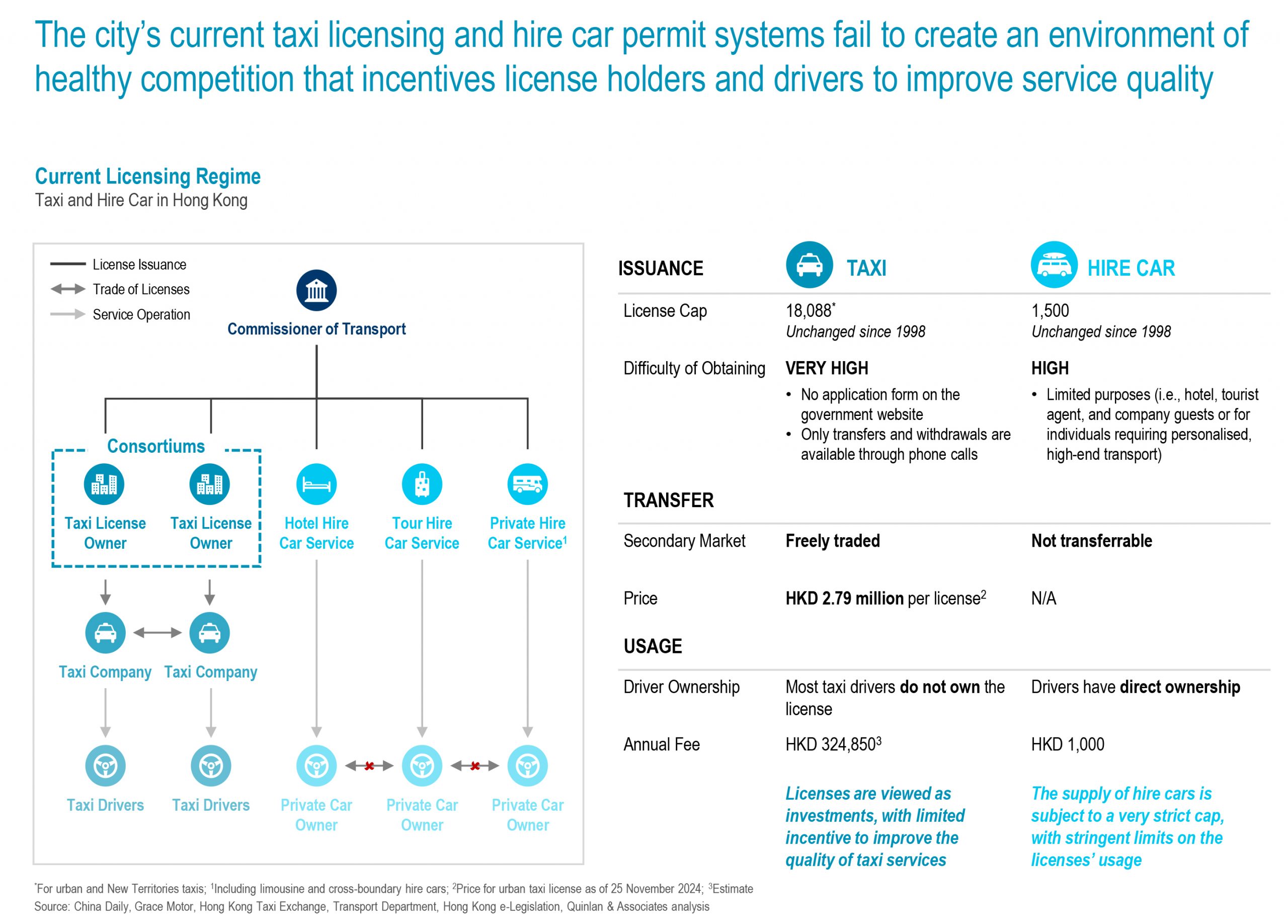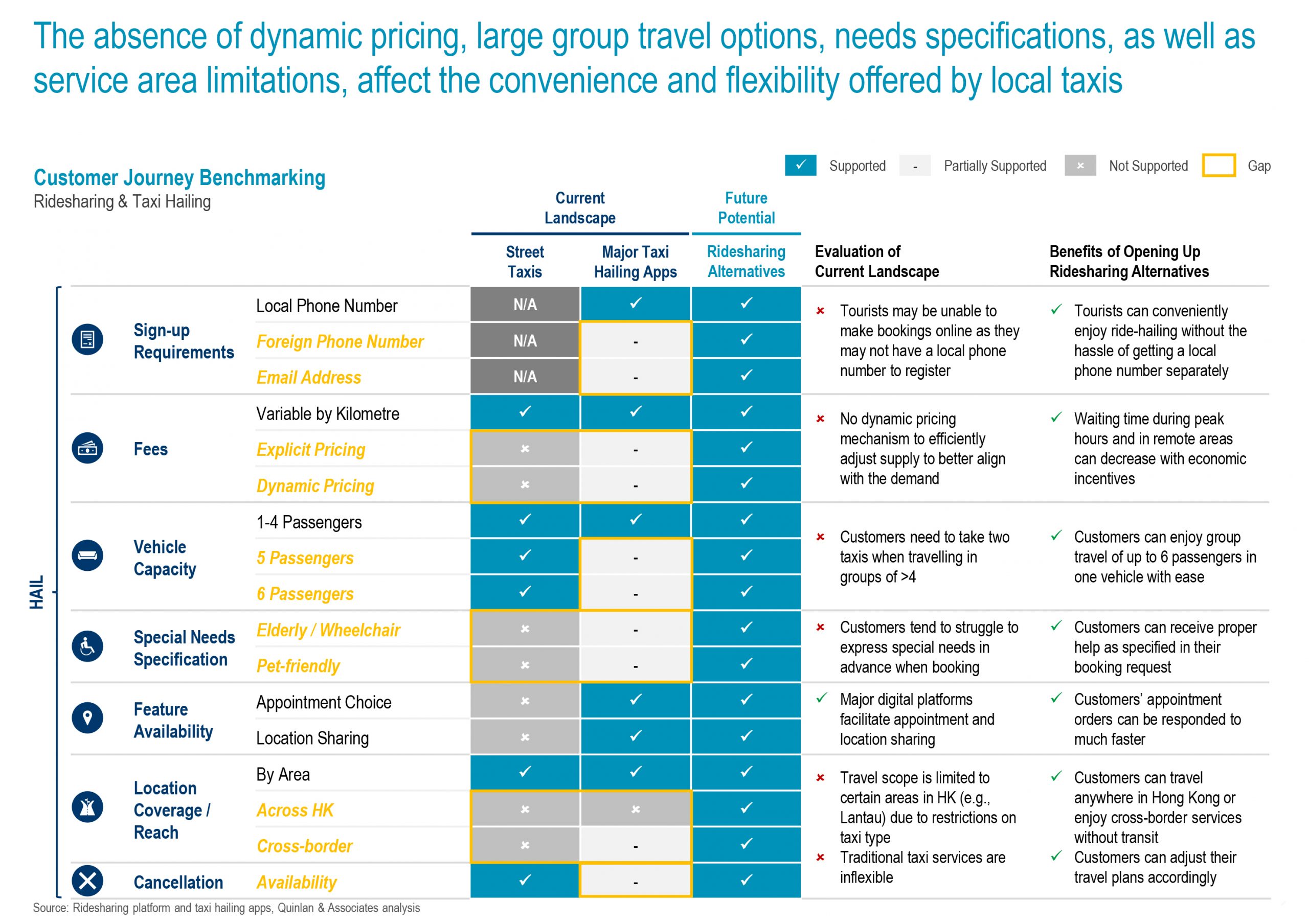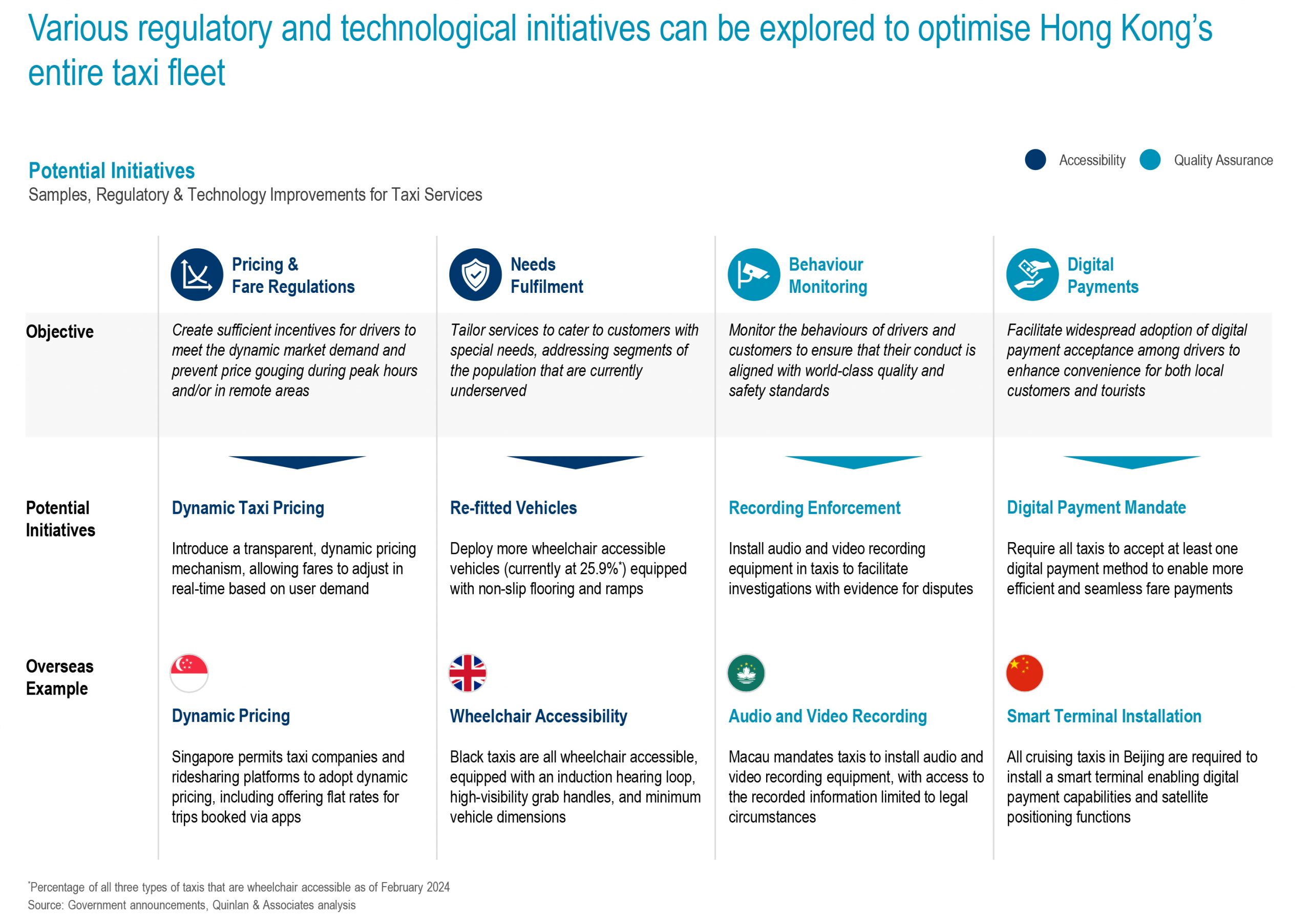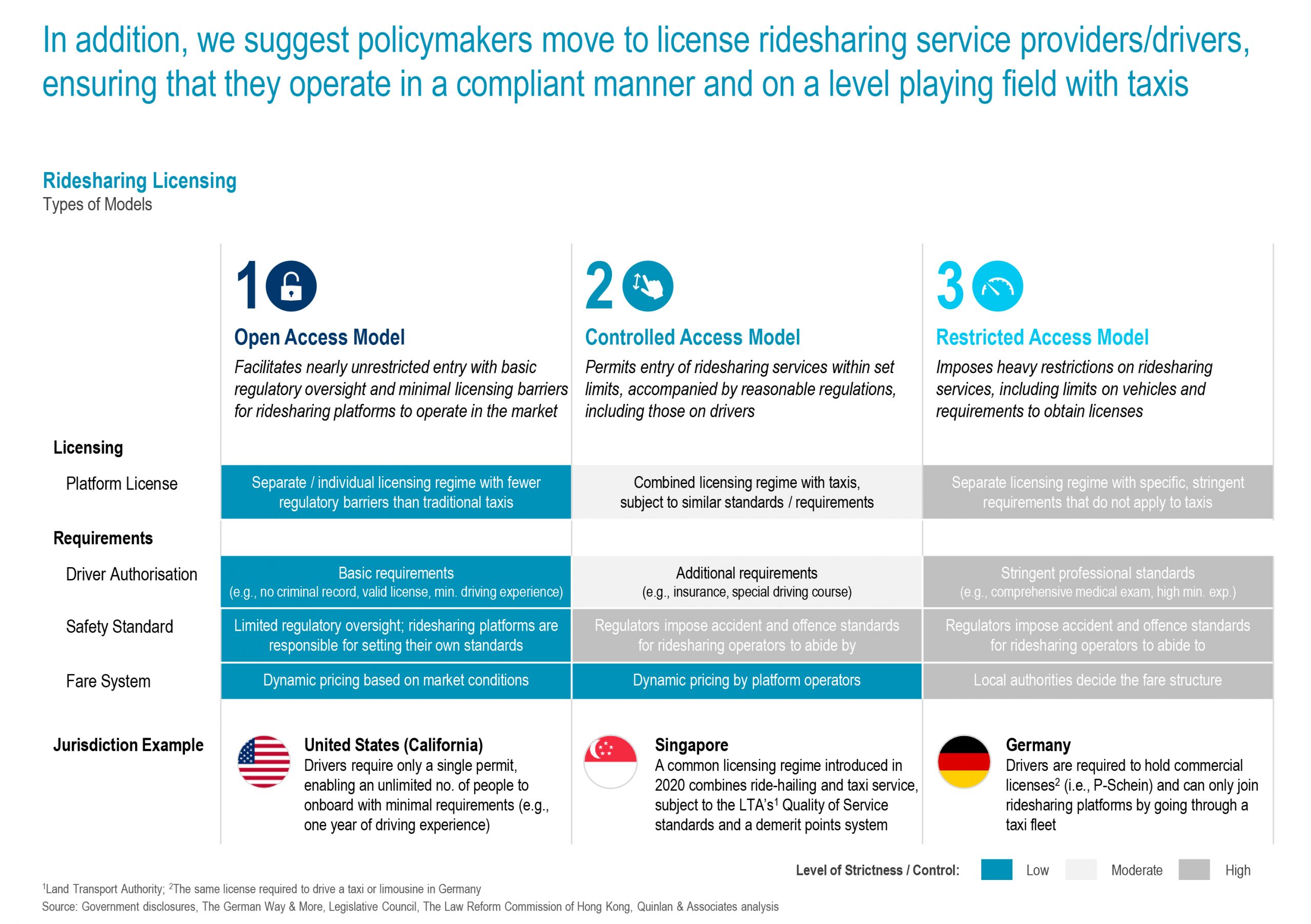A Review of Hong Kong´s point-to-point (PT2PT) transportation system
Researchers Benjamin Quinlan, Jeanny Ang, Grace Liu and Moanna Tang from Quinlan & Associates published a report regarding Hong Kong´s transportation system. The article provides an up-to-date review on this issue. Here are some of the key issues.
Pain Points in Hong Kong’s Point-to-Point (“Pt2Pt”) Transport System
Hong Kong has one of the world’s most comprehensive and efficient intra-city public transportation systems, including mass transit and Pt2Pt transport. Mass transit services consist of the city’s extensive bus network, light buses, the Mass Transit Railway system, tramways, and shipping.

These modes of transportation handle a significant portion of the city’s daily passenger traffic, offering reliable and cost-effective options for commuting. While mass transit excels in moving large numbers of people efficiently, it does not provide direct Pt2Pt routes.
Pt2Pt transport is intended for passengers who seek direct, personalised transportation to specific destinations. In addition to taxis and hire cars for special purposes, ridesharing platforms have offered on-demand transportation services, although the city’s regulatory framework currently deems them to be illegal.
The current Pt2Pt licensing regime only applies to taxis and hire cars, leaving ridesharing unregulated. This system fails to adequately meet the needs of residents for two key reasons:
- License Caps and Treatment as an Investment Asset:
Hong Kong taxi and hire car licenses have been capped since 1998, stifling healthy competition and reducing incentives to improve service quality. Taxi licenses are largely treated as speculative investment assets, freely tradeable on the secondary market at HKD 2.79m, and are issued without any conditions directly related to service quality. - Ownership-Operation Disconnect:
Many license holders lack operational expertise in taxi services. Most taxi drivers also rent vehicles from taxi companies, operating without a sense of ownership. As such, challenges can arise around instilling a sense of accountability and motivation to deliver better services to customers.

Hong Kong has one of the oldest taxi driver populations in the world at 58 years of age, contributing to an alarmingly high accident rate, with 27% of total accidents in Hong Kong involving taxis. Additionally, Hong Kong taxis fall well behind other major cities when it comes to digital payment adoption. Although more than half of taxi drivers can accept Octopus payments, the value of transactions processed via Octopus remains minimal at just ~1%.
As a result, many residents remain deeply unsatisfied with local taxi services across the entire customer journey (i.e., hail, ride, and pay), citing poor driver behaviour and difficulties in hailing taxis, in particular.
Hong Kong’s taxi complaint ratio (whether per driver, per taxi, or per trip) is higher than all other major cities, indicating widespread dissatisfaction with local taxi services. This dissatisfaction negatively impacts Hong Kong’s brand image, highlighting an urgent need for improvements in the quality of local service.
From the onset, tourists face limited accessibility when using Hong Kong’s taxi services. Most app-based bookings require a local phone number, leaving tourists with the sole option of hailing taxis on the street. During peak periods, finding a taxi becomes even more challenging due to the absence of a mechanism that could adjust to higher prices and incentivize more taxis to be on the road and available for service.

The researchers stress their view that legalizing ridesharing is an alternative to increase the number of sevice providers and address existing gaps in the market.
THE CASE FOR RIDESHARING SERVICES
Since the entry of a ridesharing platform into Hong Kong in 2014, the average number of daily taxi trips has declined at an accelerating rate. Over the past decade, the platform has facilitated over 120 million passenger trips, indicating a rapidly growing demand from local consumers for higher quality, digitalized Pt2Pt transport offerings.
- Relative to ride sharing platforms, we see major deficiencies across the end-to-end customer journey offered by Hong Kong’s taxis (including taxi-hailing apps), including an absence of dynamic pricing, large group travel options, special needs support, route transparency, digital payment support, as well as service area limitations.
- Given these deficiencies, 87% of residents support the introduction of ridesharing platforms in Hong Kong. Most residents also believe that competition from new ridesharing platforms will act as an important incentive mechanism for taxi service providers to improve their service quality.
- Despite widespread support from the public, Hong Kong is one of the few major economies in the APAC region that has not rolled out a legislative framework to support the operation of ride- hailing platforms on home soil, impacting the city’s brand image as a global innovation and technology hub.
THE WAY FORWARD
The authors recommend that policymakers focus on a dual-pronged approach of optimising existing taxi services and legalising new ridesharing platforms, establishing a range of requirements to enhance accessibility, safety, transparency, and quality assurance.
The report points out that regulating ridesharing, in particular, will be crucial in fostering healthy competition among Pt2Pt transport service providers, encouraging traditional taxi service providers to adopt new technologies and improve the quality of their services.
The researchers recognise that both the public and private sectors are working to improve the quality of taxi service; however, they find current efforts to still be insufficient for three reasons:
- Limited Coverage: The taxi fleet regime includes only 3,500 taxis, representing just 19% of all taxis in Hong Kong.
- Unaddressed Problems: Key areas remain unaddressed, such as the implementation of dynamic pricing to better align supply with demand; and
- Dependence on the Private Sector: Since the taxi fleet regime does not cover all taxis, the installation of smart metres for remaining taxis relies on private sector initiatives, which may not progress quickly enough to meet customer needs.
SUGGESTED INITIATIVES (1/2) – OPTIMISATION
The authors suggest the government to look to implement the following initiatives, as examples, to optimise taxi services in Hong Kong:
- Pricing and Fare Regulations: Introduce a dynamic pricing mechanism to help balance supply and demand.
- Needs Fulfilment: Develop more inclusive vehicle designs to better serve customers with special needs.
- Behaviour Monitoring: Enforce the installation of recording equipment for safety
and accountability; and - Digital Payments: Mandate and/or sponsor the adoption of digital payment terminals.
By implementing these initiatives, we believe the taxi industry can enhance supply dynamics to better match demand and improve overall service quality.

SUGGESTED INITIATIVES (2/2) – RIDESHARING
For the legalisation of ridesharing to take place, a comprehensive framework tailored to Hong Kong’s market characteristics would need to address licensing protocols, driver qualifications, and safety standards, similar to those that have proven effective in other jurisdictions.
The report indicates that there are three types of models governing ridesharing licenses across the globe:
- Open Access Model: This model encourages broad market participation with
minimal entry restrictions. Ridesharing platforms can enter the market easily, while
regulatory oversight is kept relatively light. - Controlled Access Model: This balanced model allows ridesharing services to operate within specific limits, while still promoting consumer flexibility and choice; and
- Restricted Access Model: This model places tight restrictions on ridesharing
services, including rigorous licensing requirements.

CASE STUDIES –SHENZHEN AND KOREA
Collaboration efforts between the public and private sectors have yielded effective outcomes in both Korea and Shenzhen.
- Shenzhen: introduced an online taxi platform that rivals top ridesharing apps, offering features like route optimisation, a driver review system, and seamless integration of digital payments with the fare metre. This innovation aligns with the convenience and transparency that digital-native ridesharing services provide, enhancing user experience and operational efficiency.
- Korea: the k.ride app caters specifically to tourists, simplifying their experience with
quick registration, overseas credit card payment options, and automatic translation.
This app helps bridge language and payment barriers, making it easier for tourists to
navigate their trips easily.